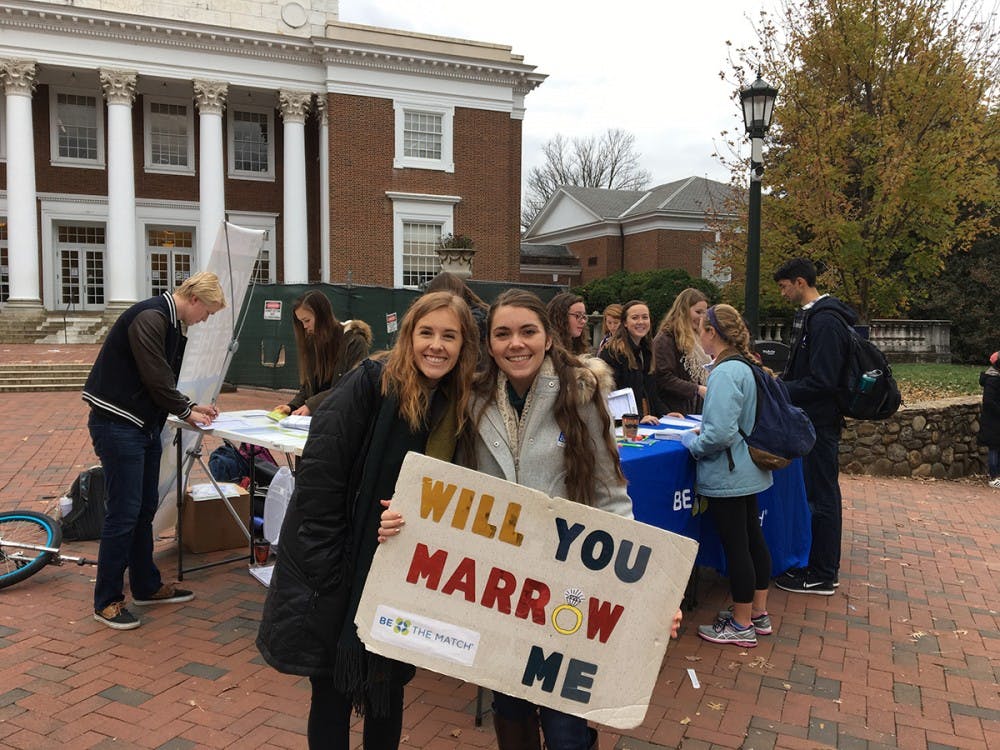The University chapter of Be the Match hosted a bone marrow registry drive Tuesday in honor of Michelle Sion, the mother of fourth-year Nursing student Talia Sion. This summer, Michelle Sion was diagnosed with leukemia.
The event took place from 11 a.m. to 4 p.m. outside Clark Library, where volunteers encouraged other students to enter the bone marrow registry, which helps locate potential bone marrow matches for those in need of transplants.
Be the Match had 142 people register at their first drive this semester. The group aimed to have more people register for this event and succeeded, registering 289 people.
Bethany Mosher, a volunteer at the drive and a fourth-year Commerce student, said it is convenient and quick to get on the registry through a simple swab. She took part in the drive last year through the Inter-Sorority Council and Be the Match.
“I had a break from class and I just thought that it would be a really great way to bring people in,” Mosher said. “It’s really easy to add people to the registry, but you do need that kind of manpower.”
Upon learning of her mother’s diagnosis, Sion swabbed and found she was not a match for her mother. She was on the Be the Match website, looking into helping with a drive and discovered the existing Be the Match chapter on Grounds, which prompted her to reach out to Jayla Kemp, third-year Nursing student and president of Be the Match at U.Va.
“Blood and bone cancers are the leading cancers that kill people under the age of 20,” Kemp said. “So it’s really close to our age and to me; also 50 percent of matches are found from our age demographic in general. So it’s really awesome that we are the best donors to help people also in our age group.”
Dan Gariepy, community representative for the national organization Be the Match, said he helps train Be the Match volunteers on Grounds.
Volunteers attend Greek life meetings to give educational presentations about bone marrow transplants and participate in fundraising initiatives, Gariepy said.
Gariepy said there are often misconceptions about the process behind a bone marrow transplant.
“It may take a day out of your life to save someone else’s life,” Gariepy said. “We actually have some students on Grounds who are donors. We got a couple that are undergrads, have one in the [Commerce] school and one in the [Law] school who are still donating and living awesome lives with zero long-term complications.”
According to Gariepy, the first step in the process is registering. There are currently 14 million people on the registry, but it’s about a one in 500 chance that an individual on the register will be matched as a potential donor. Additional screenings and blood tests narrow this group down even further.
After passing these screenings and tests, there are two ways to donate, according to Sion. A fifth of donors receive a painful needle to the hip.
“But 80 percent of them, they’re given a medication that brings their bone marrow cells out into the blood, and then it’s just donated blood,” Sion said. “So 80 percent of people who donate, it’s such a painless procedure, and it’s so simple.”
Sion said that if more people knew how likely it would be that donating bone marrow was a relatively painless process, more people would probably donate.
“Knowledge really is power in this case,” Sion said. “Just understanding it will make you more willing to sign up, which is our goal, to just talk to people and explain what this is.”







